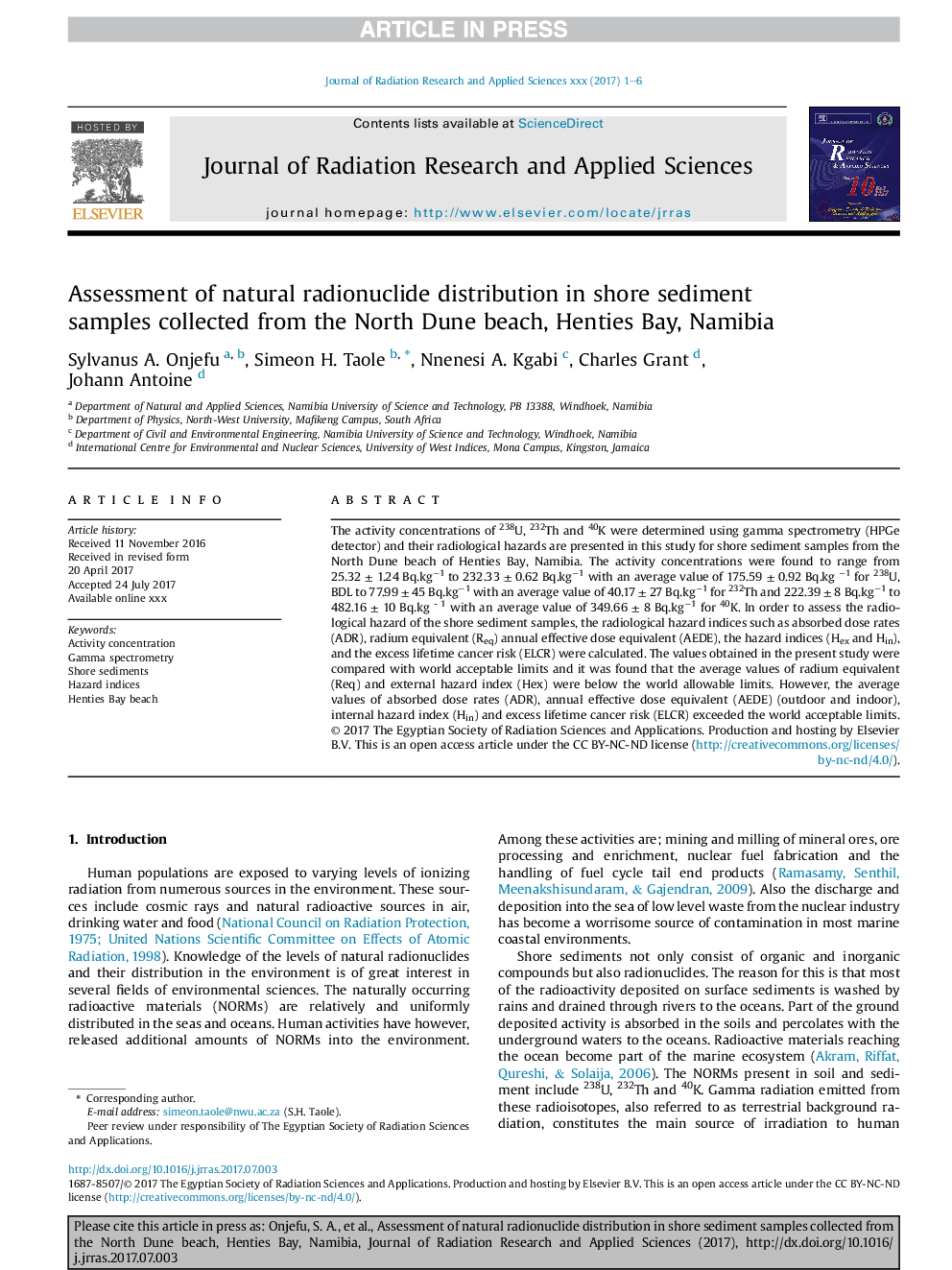| Article ID | Journal | Published Year | Pages | File Type |
|---|---|---|---|---|
| 7968901 | Journal of Radiation Research and Applied Sciences | 2017 | 6 Pages |
Abstract
The activity concentrations of 238U, 232Th and 40K were determined using gamma spectrometry (HPGe detector) and their radiological hazards are presented in this study for shore sediment samples from the North Dune beach of Henties Bay, Namibia. The activity concentrations were found to range from 25.32 ± 1.24 Bq.kgâ1 to 232.33 ± 0.62 Bq.kgâ1 with an average value of 175.59 ± 0.92 Bq.kg â1 for 238U, BDL to 77.99 ± 45 Bq.kgâ1 with an average value of 40.17 ± 27 Bq.kgâ1 for 232Th and 222.39 ± 8 Bq.kgâ1 to 482.16 ± 10 Bq.kg - 1 with an average value of 349.66 ± 8 Bq.kgâ1 for 40K. In order to assess the radiological hazard of the shore sediment samples, the radiological hazard indices such as absorbed dose rates (ADR), radium equivalent (Req) annual effective dose equivalent (AEDE), the hazard indices (Hex and Hin), and the excess lifetime cancer risk (ELCR) were calculated. The values obtained in the present study were compared with world acceptable limits and it was found that the average values of radium equivalent (Req) and external hazard index (Hex) were below the world allowable limits. However, the average values of absorbed dose rates (ADR), annual effective dose equivalent (AEDE) (outdoor and indoor), internal hazard index (Hin) and excess lifetime cancer risk (ELCR) exceeded the world acceptable limits.
Related Topics
Physical Sciences and Engineering
Materials Science
Materials Science (General)
Authors
Sylvanus A. Onjefu, Simeon H. Taole, Nnenesi A. Kgabi, Charles Grant, Johann Antoine,
